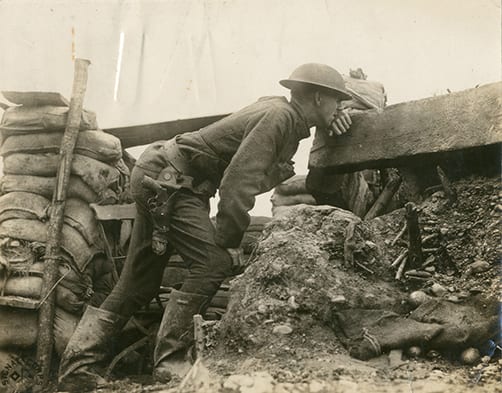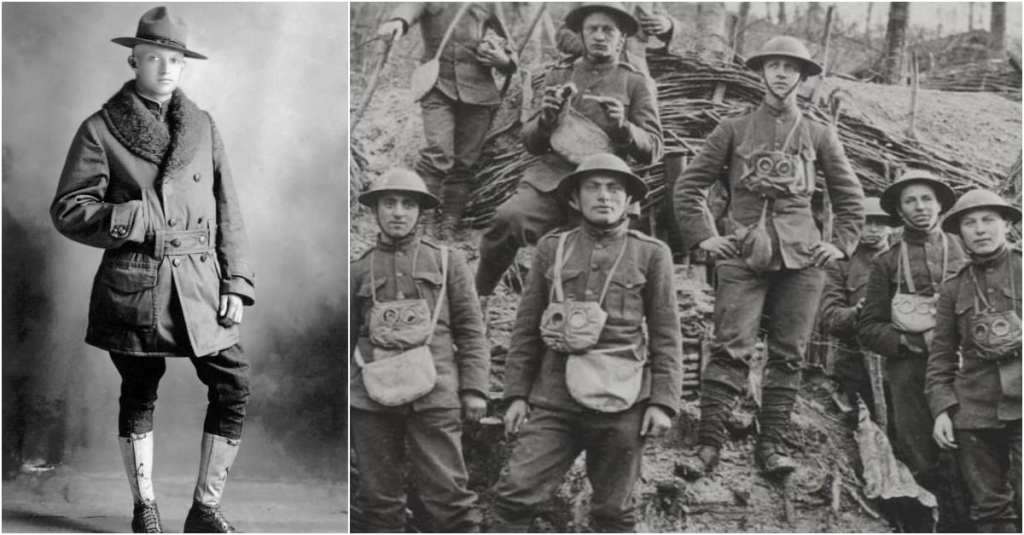As we celebrate and honor the 100th anniversary of the ending of World War I, many historians and amate*r history buffs are re-examining ‘The Great War.’ One question that has remained definitively unanswered is why were American soldiers called “doughboys”?

Photo Credit: Public Domain
There are several theories. One possible explanation dates back to the Mexican-American War (1846-48). During that conflict, American military men had to make long marches across dusty terrain, and they often appeared as if they were covered in flour or dough.
Another story from the Mexican-American War says that the soldiers were often covered with dust from the adobes that dotted the landscape, leading to them being called “adobies,” then “dobies”, and finally “doughboys.”
Another theory dates back all the way to the Continental Army. In this telling, soldiers kept the piping on their uniforms white by using clay. When the soldiers encountered a rainstorm, the clay on their uniforms would turn into “doughy blobs”, resulting in the famous nickname.

Photo Credit: US Army
Whatever the origin of the nickname, the doughboys of World War I fought heroically and have rightly earned a place in our national memory.






